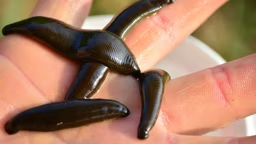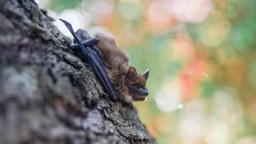
Pests, like death and taxes, are one of life’s certainties. Some pests come inside the cabin looking for a place to live, others are in search of food (not that they necessarily find any), and yet others just blunder in. Like the changes you see in the natural world around your cabin, pests follow the seasons.
Spring
You’re no doubt enjoying the fresh spring air as you open up the cabin. Just make sure that you’re sealing it off at the same time. Small openings allow pests like spiders, centipedes, ants, and Asian lady beetles access inside. The more thoroughly sealed your cabin is, the fewer pests will show up. Once the cold weather breaks, take a walk around your cabin with this to-do list:
-
Inspect around windows to make sure they are properly caulked.
-
If you have siding, look for any gaps. These need to be caulked.
-
Look for any gaps where pipes or lines, such as air conditioning, electrical lines, gas, water pipes, etc., enter your cabin. These also need to be caulked.
-
Doors and windows should fit tightly. If they don’t, add weather stripping.
Summer
Mid-summer, pest populations are at their highest. And so is the population of one of their major predators, spiders. This is good, until the spiders start building webs on your cabin, which can not only cause your place to look like an Addams Family getaway, but can also lead to more spiders indoors. If you’re willing to use some elbow grease on a monthly basis, a great pesticide-free technique is to take a fairly stiff bristle brush on a long pole and just knock down the webs. The Webster telescoping duster was made for this, but anything similar will work. But the best way to keep spiderwebs off your cabin is to spray the areas where you find them with a liquid pesticide. Find a product that’s made for outdoor use and lists spiders as one of the pests controlled. For most cabins, you’ll want to spray the eaves and around lights. If you have a second story, consider hiring a pro who has access to special equipment that lets them treat higher areas safely. Modern pesticides are registered by the EPA only after going through years of rigorous testing. If there are concerns with application near water, the product’s label will state as much. If you apply spray only to the structure and the product dries before any rains, it should adhere to the surface it’s applied to.
Fall
As the days shorten and nighttime temperatures drop, hibernating animals start to look for places to spend the winter. The Asian lady beetle is no different. You know this pest well. They look like ordinary ladybugs, but they show up inside your cabin instead of staying outside. Sometimes, the best sealing and caulking in the springtime doesn’t do enough to keep these pests out – they are so insidious at finding entryways. It’s in the early fall (and in some regions, late summer) that they come to buildings looking for a place to hibernate. If you live in an area that suffers from these pests, watch closely after Labor Day. One day, you’ll start to see droves of them landing on your cabin, especially on the sides that get the warmest – the south and the west. Once they begin to land on your cabin, you can spray the sides that they are landing on with a pesticide. Make sure the pesticide is labeled for Asian lady beetle control on the exterior of buildings. Eradicating them can be quite an involved process. If you think you’re in over your head, don’t be afraid to call an experienced pro.
Winter
As you open the curtains in your cabin living room to admire the deer tracks imprinted in a fresh layer of snow, you also notice the tracks of animals that live inside your cabin. Not your pets, but rather Asian lady beetles wandering around the inner surface of your window. If they spend enough time on a light-colored surface, they leave behind discolored spots that are hard to clean off. And, to add injury to insult, sometimes they bite! Not everyone gets Asian lady beetles, but if your cabin is in an area prone to them, you’ll see them inside during the winter and spring. Unfortunately, once you see them inside, it’s difficult to do much about them. The best you can do is to pull out the vacuum cleaner and suck them up. Science still hasn’t found a way to get around death, and the government doesn’t show any sign of stopping taxes. But even though pests will inevitably attempt to set up residence in your cabin, you at least now have a year-round plan for keeping them at bay.
Sanity-Enhancing Beetle Traps
If you are spending more time vacuuming up tiny orange terrors when you arrive at the cabin than you are kicking back with a cold one, you may want to place a few traps throughout your getaway to keep the Asian beetle population at bay in your absence. Modern light traps work in one of two ways: They either capture bugs on a glue board or terminate them with an electrocution grid. Whichever type of light trap you use, you must replace its UV lamps yearly. Other products on the market include a variety of glue traps that capture the bugs (once they wander in, they can’t wander out). These products may not be as effective as vacuuming, but they can at least take some of the “creepy” out of your crawly experience.
Ted Snyder spends most of his time meditating on entomology in the Ashram of Pest Management, which is rumored to be near Milwaukee.










